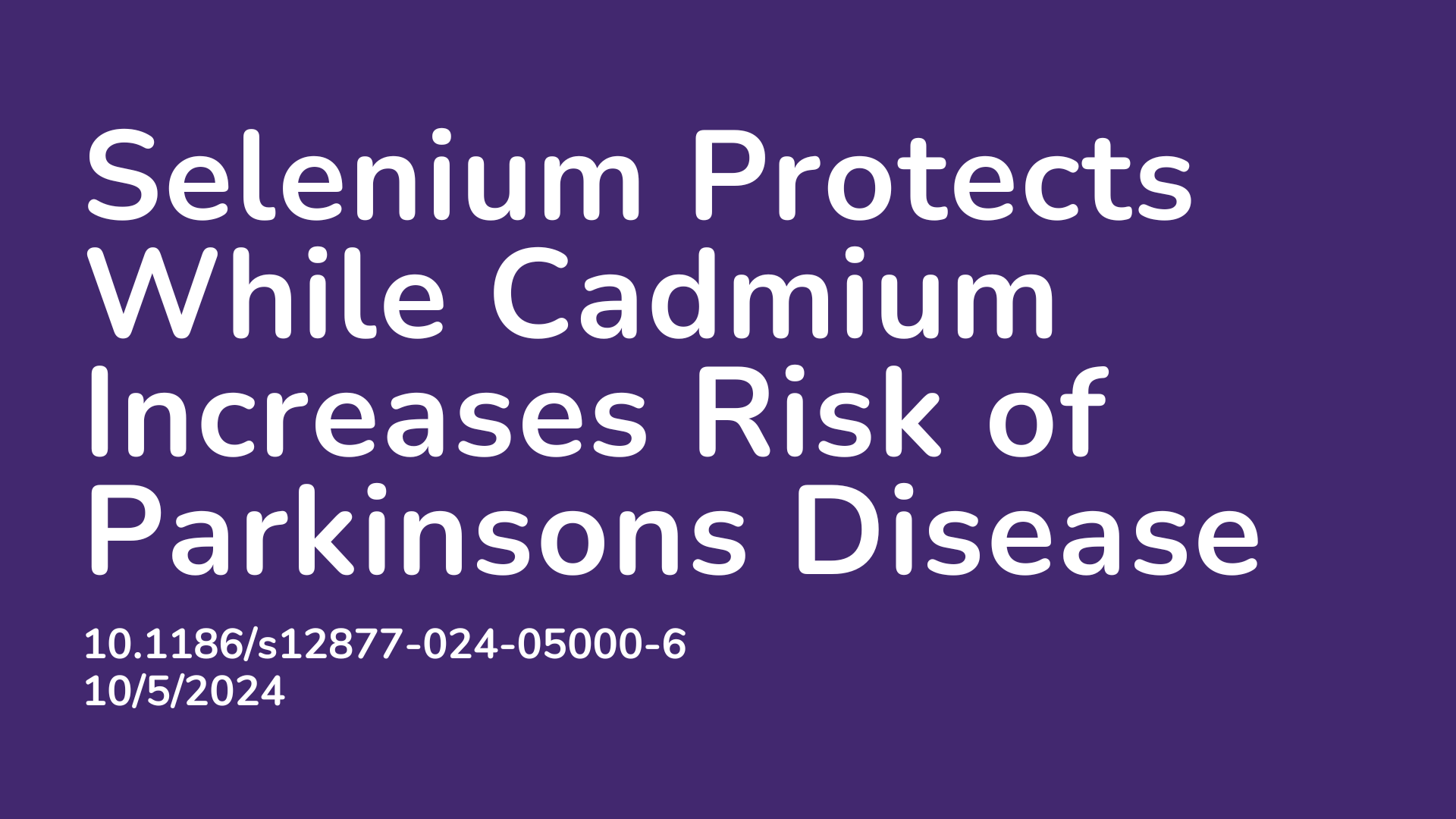Summary:
Parkinson’s disease (PD) is a brain disorder that gradually affects movement, causing symptoms like tremors, stiffness, slow movement, and problems with balance. It is characterized by the loss of dopamine-producing brain cells and the presence of protein clumps called Lewy Bodies. The exact causes are not fully understood but likely involve oxidative stress, mitochondrial dysfunction, and genetic and environmental factors. Selenium, an essential mineral, may help protect against PD because of its antioxidant properties, which reduce oxidative stress in the brain. Animal studies have shown selenium can improve motor function and protect brain cells. Conversely, cadmium, a harmful heavy metal, increases oxidative stress and damages the nervous system, potentially worsening PD. This study investigated if selenium intake and blood cadmium levels are linked to PD mortality and whether these two factors interact in the progression of PD. The researchers did so by analyzing 184 individuals, using the National Health and Nutrition Examination Survey (NHANES) data. The findings suggest a moderate increase in selenium intake had a protective effect on PD, and that cadmium had the potential to increase the risk.
Abstract:
Background: Parkinson’s disease (PD) is a slowly progressive neurodegenerating disease that may eventually lead to disabling condition and pose a threat to the health of aging populations. This study aimed to explore the association of two potential risk factors, selenium and cadmium, with the prognosis of Parkinson’s disease as well as their interaction effect. Methods: Data were obtained from the National Health and Nutrition Examination Survey (NHANES) 2005–2006 to 2015–2016 and National Death Index (NDI). Participants were classified as Parkinson’s patients by self-reported anti-Parkinson medications usage. Cox regression models and restricted cubic spline models were applied to evaluate the association between PD mortality and selenium intake level as well as blood cadmium level. Subgroup analysis was also conducted to explore the interaction between them. Results: A total of 184 individuals were included. In full adjusted cox regression model (adjusted for age, gender, race, hypertension, pesticide exposure, smoking status and caffeine intake), compared with participants with low selenium intake, those with normal selenium intake level were significantly associated with less risk of death (95%CI: 0.18–0.76, P = 0.005) while no significant association was found between low selenium intake group and high selenium group (95%CI: 0.16–1.20, P = 0.112). Restricted cubic spline model indicated a nonlinear relationship between selenium intake and PD mortality (P for nonlinearity = 0.050). The association between PD mortality and blood cadmium level was not significant (95%CI: 0.19–5.57, P = 0.112). However, the interaction term of selenium intake and blood cadmium showed significance in the cox model (P for interaction = 0.048). Subgroup analysis showed that the significant protective effect of selenium intake existed in populations with high blood cadmium but not in populations with low blood cadmium. Conclusion: Moderate increase of selenium intake had a protective effect on PD mortality especially in high blood cadmium populations.
Article Publication Date: 10/5/2024
DOI: 10.1186/s12877-024-05000-6



